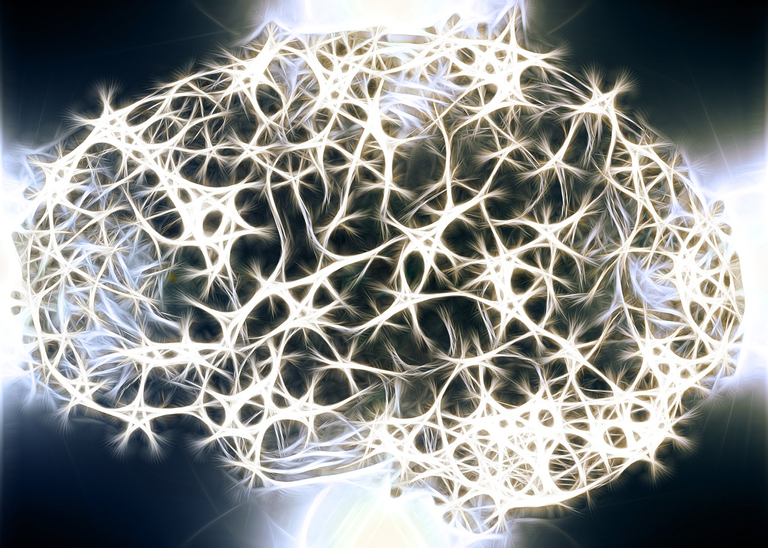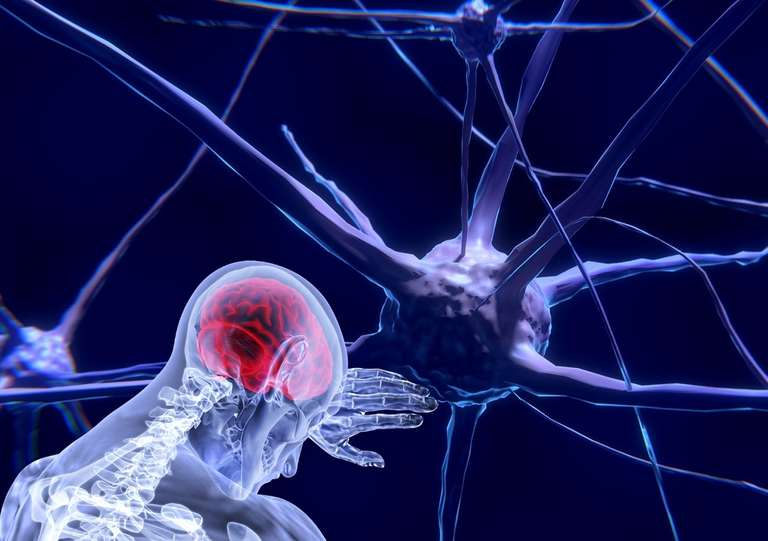Brain as a leading factor in the human nervous system
In continuation with my last article on the brain, in this post i will proceed futher on how the brain plays the key role in cordinating the human body. The whole process is what we called the nervous system. It is an interest mechanism in the body system and you would take your time to read and understand. So lets start right away
The nervous system is the network through which the brain and spinal cord communicate with the rest of the body. Throughout the body, nerve endings transmit messages to this organ, which then processes them and delivers them to their intended destinations. It regulates and orchestrates everything the body does, from action and sensation to the exchange of information between different systems. The nervous system is divided into the brain and spinal cord (called the central nervous system," or "CNS) and the rest of the body (called the peripheral nervous system," or "PNS). The human nervous system, like those of other higher animals, consists of a central nervous system (the brain and spinal cord) and a peripheral nervous system (the rest of the neurons in the body) (the nerves that carry impulses to and from the central nervous system). Both the size and efficiency of the human brain are well-known facts. The brain regulates and orchestrates every aspect of our lives, from thought and emotion to movement and experience. The brain is not only the seat of thought, but also the organ that allows humans to use more advanced cognitive abilities like speaking, logic, and creativity.
Development of the brain
Most neurons, or nerve cells, are created while a person is still in the embryonic stage, and when they expire, they are not restored. The neural plate of a viable egg does not fully develop until day 18. As such, the nervous system has made its first developmental move. The proper functioning of the brain and body depends on this early nerve system growth. It is during this period that the foundations are being laid for a healthy brain and body, so any disturbances or abnormalities at this stage can have long-term consequences. This occurs around the halfway point of the second month of pregnancy. Reflexes in the cranium, trunk, and extremities are more likely to be triggered during the third month of pregnancy. The embryo's visage and pulse begin to take shape during the second month of pregnancy. And it's around this time that the fetus's brain begins to function. The fetus has matured to the point where it is capable of sucking and swallowing.
Many transformations occur within the nervous system as it evolves into a sophisticated system. The human brain is estimated to contain roughly 1 trillion synapses at maturity. It takes an average of 2.5 million new synapses to be created every minute during fetal development. Each prospective neuron connects to a predetermined set of other neurons or targets, such as sensory receptors, in this process, resulting in neural networks with a hundred trillion synapses. In addition, target neurons have very precise locations on their cell membranes where synaptic contacts with other neurons can be formed.
Most people concur that the genetic code can't be the only cause of these things because there aren't nearly enough genes in the human body to describe how complex they all are. Instead, the transition from immature to adult neuronal and glial cells is driven by (1) genetic groups and (2) internal and external environmental cues to the fetus. The sum of these factors is what ultimately determines the outcome. There is no doubt that both of these groups of variables are necessary for healthy brain growth. The intricate interplay between these two groups of variables is, however, still poorly known. The interplay between genetic predisposition and external influences on nerve system development is an area that needs more exploration. Genes play a crucial role in the orderly and predictable progression of nervous system development.
The differentiation of cells, for instance, is regulated by transcriptional cues. The expression of the genetic signals that regulate cellular activity is facilitated by transcription, which involves the conversion of DNA into RNA. RNA molecules regulate how the cells function. The speed and precision of growth can be affected by factors such as diet and environmental toxins. These cues can also influence the course of future growth. Understanding the interplay between hereditary and environmental variables is crucial for treating and preventing neurological disorders.
Embryonic impacts on the environment include molecularly composed cellular impulses. A person's capacity to learn, as well as their diet, senses, relationships, and societal interactions, can all be influenced by their immediate surroundings. Every one of these factors is crucial for proper neuronal differentiation and healthy synapse links. For the nervous system to continue to operate normally, it must be activated in the same manner throughout a person's entire lifetime.
Changes in the Brain

Source
The quickly developing blastocyst transforms into the embryonic disk during the second week before delivery. Concurrent with this process is the formation of the fetal disk. A blastocyst is a collection of cells formed inside an egg when sperm and an egg fuse. The embryonic disk quickly differentiates into the three germ layers (ectoderm, mesoderm, and endoderm). Formed from mesoderm, the notochord is the neural tube's first structural component. It has a tube in the middle that serves as an improvised spine. Every single one of those chordate organisms also has a notochord. It plays a crucial role in embryonic development by instructing the growth of other crucial structures like the neural tube. A notochord is a structural component shared by all chordate organisms, so this is the case.
The notochord is gradually replaced by the spinal column as the infant develops. The mesoderm and notochord secrete a chemical that signals adjacent undifferentiated ectoderm cells to grow along the future dorsal midline of the body. The ectoderm cells are the recipients of these instructions. This procedure results in the formation of the neural plate. Neuroepithelial cells form the neural plate. A neural tube develops from these precursor cells. The neural tube develops out of the neural plate. After this period ends, neuroepithelial cells begin to divide, undergo differentiation, and generate new neuronal and glial cells.
These adjustments allow for the birth of neurons and neuroglia in the fetus and their subsequent migration from the neural tube to their final destinations. Both dendrites and axons are produced by every cell. During development, axons lengthen and divide; the offshoots of these divisions form synapse links with neighbouring neurons or skeletal muscle fibres. The growing brain, whether in utero or shortly after birth, undergoes a process known as synaptic growth and migration. It plays a significant role in the maturation of the brain and nervous system. Once synapses are formed, they are refined and perfected throughout infancy and into puberty.
During this time, billions of neurons migrate systematically, their axons expand (many of which extend throughout the brain), and thousands of synapses are formed between each axon and its target neuron. In this stage of development, new synapses are formed in the brain. Where and how synapses travel and develop is at least partially determined by chemical and physical variables. Growth cones, the tips of developing axons, appear to be able to recognize and react appropriately to distinct chemical signals. Branches of nerves and axons are directed to their proper destinations by these signals, and any that fail in their attempts to make contact with their intended targets are eliminated.
Target cells produce trophic factors like nerve growth factors after forming a synaptic link with neurons. The longevity of the cell establishing the synaptic link depends on this nourishing component. Contact guidance is the mechanism by which immature neurons are guided physically along a glial fibre structure. Physical cues, such as adhesion molecules and growth factors, guide developing nerves to their proper destinations in the embryo. The development of the nervous system and the proper wiring of its circuitry rely on contact guidance.
The establishment of synapse links is not always reliable or precise in the early stages of brain development. This is then followed by a regulated process whereby numerous cells and connections are eliminated. This occurs in some regions of the growing neural system. Synaptic trimming is the mechanism by which neuronal synapses can be modified. All told, this improves the efficacy and efficiency of nerve system transmission. Environment plays a crucial part in how neurons develop and the number of synaptic connections that are fine-tuned before a critical time. Until the threshold is crossed, the stability of some synapses will remain low.
Because of the profound impact that early events and effects can have on later brain development, early childhood is crucial for intellectual growth and development. Synaptic pruning occurs less frequently after the crucial time. As a result, it becomes more challenging to alter established neural circuits. Synaptic connections are more susceptible to being stabilized and less likely to alter after the crucial time, due to environmental variables. This demonstrates that some skills and sense tasks can evolve later in life after the individual has already been born. This appears to be the case for a subset of cerebral abilities well into maturity and beyond. Contrary to what was implied in the preceding statement, the critical era is not the final stage of development. The brain's ability to adjust and change in reaction to new events and obstacles does diminish with age.
References
- Human nervous system | Description, Development, Anatomy, & Function. n.d. Encyclopedia Britannica. https://www.britannica.com/science/human-nervous-system.
- What are the parts of the nervous system? 2018, October 1. https://www.nichd.nih.gov/. https://www.nichd.nih.gov/health/topics/neuro/conditioninfo/parts.
- @ClevelandClinic. n.d. Nervous System: What it is, Types, Symptoms. Cleveland Clinic. https://my.clevelandclinic.org/health/articles/21202-nervous-system.
- What is the Nervous System? 2010, February 11. News-Medical.net. https://www.news-medical.net/health/What-is-the-Nervous-System.aspx.
- Nervous system. n.d. Nervous system: Structure, function and diagram | Kenhub. https://www.kenhub.com/en/library/anatomy/the-nervous-system.
- Miller, C. n.d. 8.2 Introduction to the Nervous System – Human Biology. 8.2 Introduction to the Nervous System – Human Biology. https://humanbiology.pressbooks.tru.ca/chapter/10-2-introduction-to-the-nervous-system/.
- Nervous System (for Parents) - Nemours KidsHealth. 2022, July 1. Nervous System (for Parents) - Nemours KidsHealth. https://kidshealth.org/en/parents/brain-nervous-system.html.



I will like to ask this question
Which part of our body is the mind located? Is it the brain or the heart
Well, the mind is not a structure in the body but just a word like the soul. So it has no location in the body
Thanks for your contribution to the STEMsocial community. Feel free to join us on discord to get to know the rest of us!
Please consider delegating to the @stemsocial account (85% of the curation rewards are returned).
You may also include @stemsocial as a beneficiary of the rewards of this post to get a stronger support.
Today I learned a little more about this vital organ.
For some time now neuroscience has captivated me and I like to read everything related to the brain.
Thank you dear @jsalvage for sharing such educational information, it was a master class.